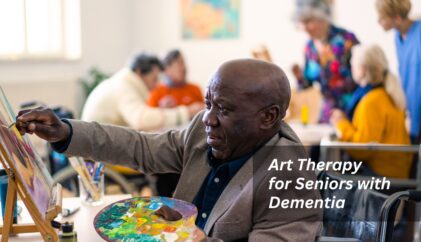
Anxiety symptoms, such as unease, dread or an irrational sense of impending doom, can be quite unpleasant. Find out how to reduce your anxiety.
Everything Around Me Feels Stressful. How Can I Reduce My Anxiety?
It’s safe to say 2022 isn’t quite turning out how anyone had planned. Between the continued pandemic, flu and RSV outbreaks, a difficult political climate, global economic struggles, and reduced socialization with family and friends, the environment we are all living in has been stressful, to say the least.
With increased levels of stress, isolation, and uncertainty, rates of anxiety and anxiety-related conditions have risen over the last few years. Left untreated, anxiety can significantly affect the body and increase the risk of developing chronic health conditions. Fortunately, anxiety is very treatable, and there are many things you can incorporate throughout the day to reduce your symptoms.
What is Anxiety?
Anxiety typically occurs when a person is confronted with stressful, dangerous, or unfamiliar circumstances. It is an emotion characterized by feelings of uneasiness, distress, or dread.
People with anxiety may also experience physical symptoms, such as sweating, nausea, and difficulty concentrating. While a certain level of anxiety helps us stay alert and motivated, prolonged anxiety can be debilitating.
When anxiety symptoms persist and worsens with time, an anxiety disorder may be present. People with anxiety disorders often experience anxious thoughts that are difficult to control.
It is not unusual for them to experience physical symptoms, such as a rapid heart rate, dizziness, and difficulty sleeping. They may also adopt new behaviors and avoid everyday activities that trigger anxiety.
Specific types of anxiety disorders include:
- Generalized anxiety disorder
- Panic disorder
- Phobias
- Social anxiety disorder
- Post-traumatic stress disorder (PTSD)
- Obsessive-compulsive disorder
What are Panic Attacks?
Sometimes referred to as anxiety attacks, panic attacks are sudden episodes of extreme fear accompanied by severe physical reactions without any apparent danger. Panic attacks can be frightening, and can make you feel as if you're having a heart attack, losing control, or even dying.
Panic attacks can strike at any time — when you're in a public place, driving a car, or even sound asleep. Some people experience panic attacks occasionally, while others experience them frequently. Common panic attack symptoms include:
- A feeling of impending doom or danger
- The fear of losing control or dying
- A rapid, pounding heartbeat
- Shaking or trembling
- Sweating
- Shortness of breath or tightness in your throat
- Chills
- Hot flashes
- Nausea
- Abdominal cramping
- Chest pain or tightness
- Headaches
- Feeling dizzy, lightheaded, or faint
- Numbness or tingling
- Detachment from reality
Anxiety Treatment
Anxiety and anxiety-related disorders can be treated effectively using a variety of approaches. Common treatment options include psychotherapy and medication. Anxiety patients can benefit from one or a combination of these treatments.
Psychotherapy
Also called talk therapy, psychotherapy encompasses a variety of techniques aimed at helping patients manage their emotions, cope with stress, and understand behaviors that affect interpersonal relationships and daily functioning.
During talk therapy therapy sessions, a person will meet with a licensed mental health professional to discuss their thoughts, feelings, and experiences.
Common types of psychotherapy include:
Cognitive Behavioral Therapy (CBT): CBT is a short-term treatment that helps patients identify unhealthy thought patterns in stressful situations that cause anxiety or panic attacks. CBT can be used in individual or group therapy sessions.
Prolonged Exposure Therapy (PE): A form of CBT, this technique is often used in treating PTSD and phobias. It aims to help patients overcome the distress they experience when reminded of past traumas or when confronted with their fears.
Eye Movement Desensitization Reprocessing Therapy (EMDR): Commonly used to treat PTSD, this therapy facilitates healing by helping patients process their trauma. Treatment sessions use bilateral stimulation, such as sounds and tapping, to help the memory become less distressing.
Dialectical Behavioral Therapy (DBT): DBT helps patients develop skills for managing their emotions, stress-management, and mindfulness. Often used to treat Borderline Personality Disorder, it can also treat anxiety disorders such as PTSD.
Acceptance and Commitment Therapy (ACT): Another form of CBT, this technique emphasizes acceptance as a means of dealing with negative thoughts, feelings, or circumstances. ACT also promotes a commitment to healthy, constructive behaviors that uphold your values or goals.
Interpersonal Therapy (IPT): IPT examines how individuals function socially and within their relationships. During therapy sessions, individuals will work on addressing their anxiety in relationships, such as social anxiety.
Medication
In some cases, medications are used in conjunction with psychotherapy to treat anxiety symptoms. The type of medication prescribed to the patient will depend on their symptoms and medical history.
These may include:
- Antidepressants
- Anti-anxiety medications
- Benzodiazepines
- Beta blockers
How to Reduce Anxiety Symptoms
When experiencing chronic stress and anxiety, it is important to pay attention to what your mind and body need. Here are some ways you can reduce your anxiety symptoms when things around you feel out of control and difficult.
Focus on “being” instead of always “doing.”
One of the ways we often attempt to exert control over our environment is by making ourselves overly busy. The problem with this is that it usually only works for a short amount of time before we end up feeling more overwhelmed than we did when we started.
There’s nothing wrong with giving yourself a break. In fact, taking some downtime allows you to actually experience your feelings, which in turn can help reduce feelings of anxiety. Try 5-10 minute meditations or relaxation exercises.
Listen to your favorite music. Do some stretches or yoga out in the sun. Read a chapter in a good book. Journal for 10 minutes.
Whatever you do, make sure it allows your mind to rest so that you can be present with your feelings. Doing this frequently will help you return to your daily responsibilities with a clearer head. Learn to let yourself “be” sometimes so that when it comes time to “do,” you can engage mindfully.
Breathe.
Everyone says this, but how often do you actually do it? It might seem oversimplified but breathing slowly and deeply has been proven to lower your heart rate and refocus your mind.
Inhale deeply and slowly for five seconds, hold for one second, and then exhale slowly for five seconds. Repeat for 5-10 breaths. The important thing is to slow both your body and mind down through your rhythmic breathing.
Get involved.
There is a lot going on in the world right now. If you’re feeling overwhelmed, try finding simple ways to get involved and make a difference. Join a call campaign for something you care about.
It will help break you out of your daily stress and give you a sense of feeling accomplished. Being of service to others helps get us outside of our own heads and helps improve mental well-being. If you find you feel like you are running on a hamster wheel, try volunteering and helping others.
Move your body.
Find a form of exercise that brings you joy. Yes, joy. Too often, people think of “exercise” as something awful you must do for 30-45 minutes because the doctor said so. If this is true for you, it’s likely the negative impact this has on your mental health is undoing the positive physical impacts!
Choose an activity that promotes peace for you. Maybe it is a brisk walk at a local park or practicing yoga in your living room to soothing music. Maybe it is putting on the music and having an impromptu dance party with the kids or walking the dog around the block.
Whatever feels good for you, do it and allow yourself to experience being in your body instead of tied up in your mind.
Maintain a routine (but don’t be too rigid).
Keeping to a routine can help when you are feeling stressed out or anxious, particularly right now with so many people working from home. For many, our work and home lives are blending together, and it can be hard to disconnect.
Try to maintain a decent sleep schedule to ensure your body and mind are well rested and prepared for the next day. Plan to have healthy meals and snacks at home, and plan time for breaks, physical activity, and other important activities into your week.
As with the exercise above, becoming too rigid will work against you! If something pleasurable presents itself and interrupts your regular routine, do it! The important thing is to stay flexible.
Talk to someone.
Confiding in your support system about your stress and anxiety can help alleviate some of the burden. It can make you feel less alone to know you have the support of others around you.
Sometimes, we feel embarrassed of our feelings or our need for help and try to hide them. This only makes them worse, as hidden feelings fester in the dark.
Talk Therapy with CHE
Whether you're struggling with anxiety, or aiming to regain control of your life, psychotherapy can help relieve your symptoms and improve your quality of life.
At CHE Behavioral Health Services, we offer compassionate and effective treatment for a variety of mental health conditions. With an experienced network of over 850 licensed mental health professionals, CHE provides affordable, convenient, and personalized care.
To learn more about psychotherapy and its benefits at CHE Behavioral Health Services, please call 888-515-3834. We are ready to talk, and ready to listen.



